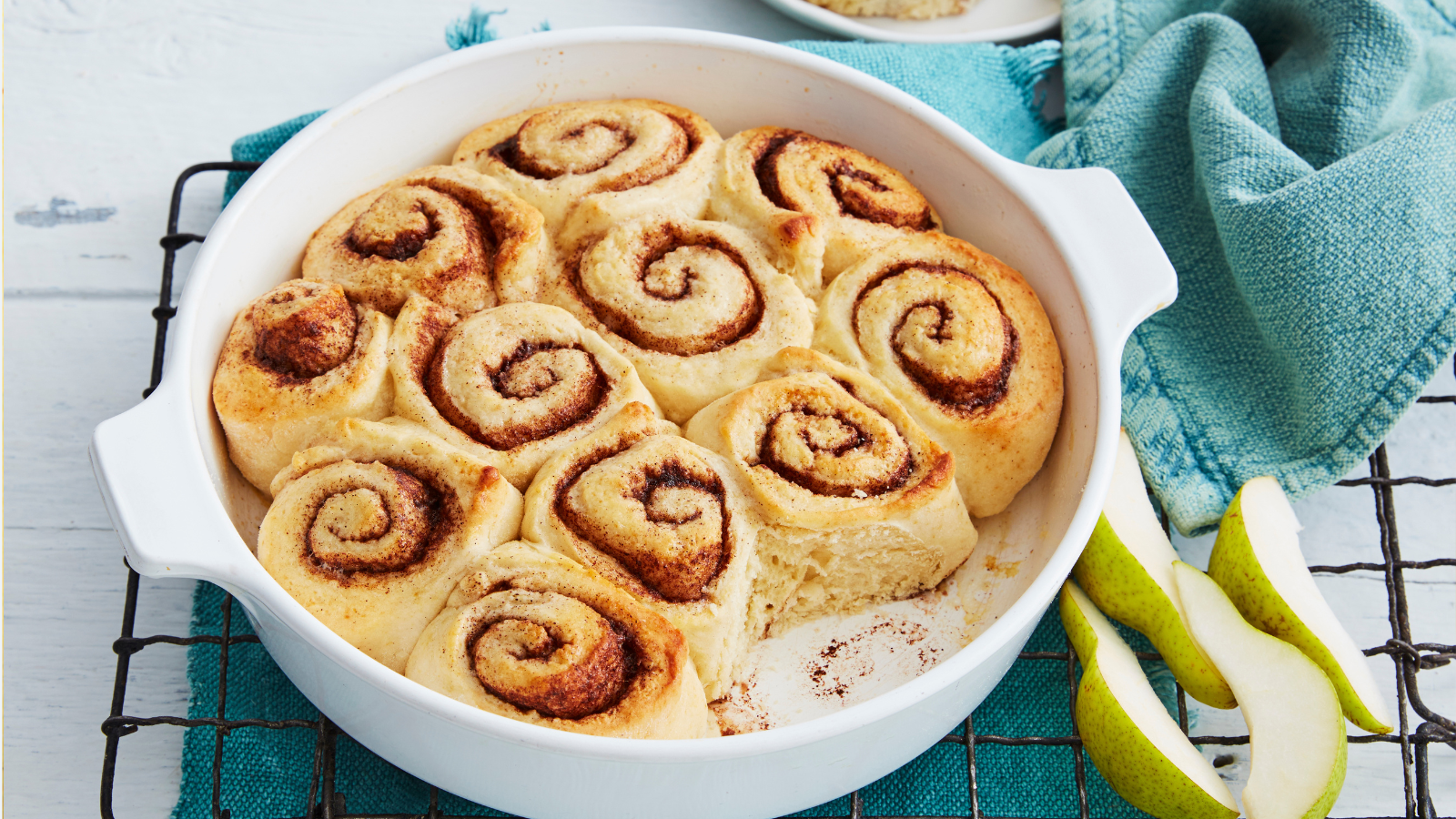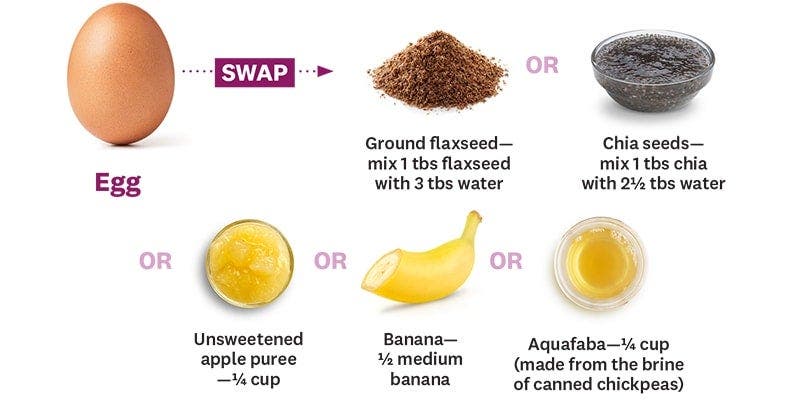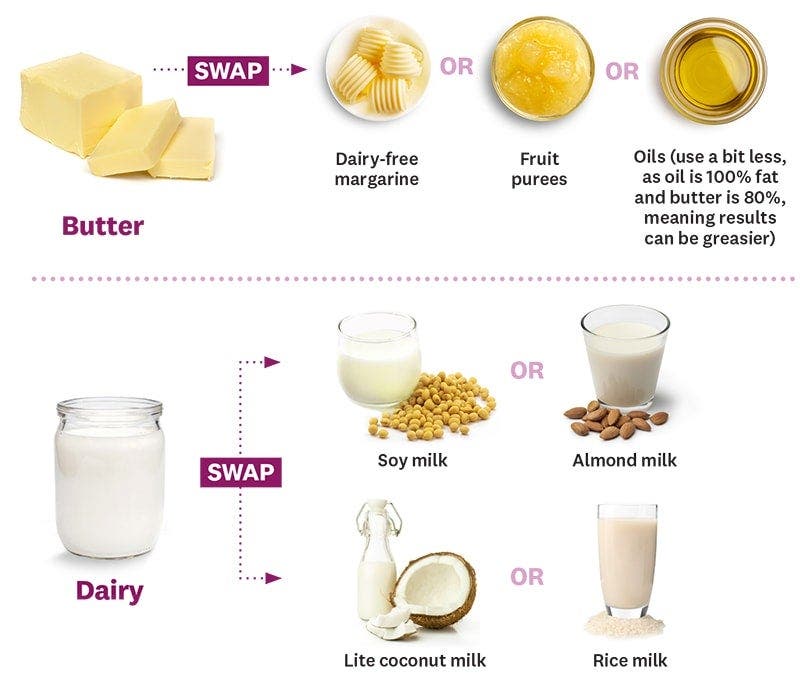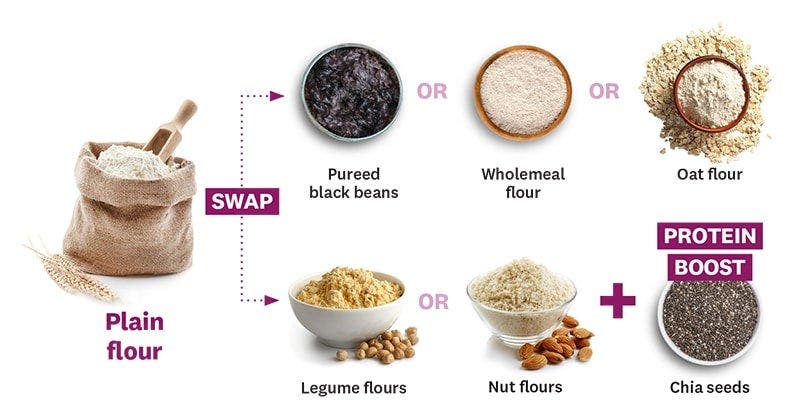Healthy baking tips


Hacks and tips for healthy baking
Making baking healthier doesn’t have to be complicated—here are some easy adjustments to support your weight loss and wellness journey. By tweaking a few ingredients and techniques, you can enjoy delicious baked goods without compromising your health goals.
Lower the total fat
For icing, beat 100 grams light cream cheese, 75 grams low-fat smooth ricotta, 1 teaspoon vanilla extract and 2 tablespoons icing sugar until smooth and spread mixture on top of your cake or cupcake.
Another substitute for icing is to use 99% fat-free plain yoghurt as a base and add a small amount of icing sugar or fruit to sweeten it. This will give your baked goods a nice tangy flavour, too.
Lower the added sugar
Fruit is a great option to use as a natural sweetener because fruits, such as fresh dates or fruit puree, don’t need to be used in large quantities to add a little sweetness to your baking.
If you want to further reduce the amount of sugar in your baking and still keep it natural, stevia is a good sweetener to try. Natural sweeteners are safe to consume in reasonable amounts and stevia blends are available from supermarkets and health food stores. Replace sugar in a 1:1 ratio.
Converting recipes to be vegan-friendly
It’s really easy to make baking recipes vegan! Most of the time, all you have to do is swap out the eggs and dairy. Here are some great go-to vegan egg substitutes to try:

Converting recipes to be gluten-free
Gluten provides structure and stickiness, so you need to compensate for the lack of this when baking gluten-free (GF) goods. Rather than cakes that have to be sliced, it’s best to make smaller biscuits, muffins and cupcakes where possible. Individual serves also require shorter baking times, which will minimise the problem of drying out around the edges.
Gluten free flour substitutes include:
- Almond flour (a great all-rounder).
- Buckwheat flour (best for breads).
- Amaranth flour (combine with other GF flours when baking. Best to use in pie crusts, bread and tortillas).
- Brown-rice flour (high in protein and fibre, and is great for using in cakes and cookies).
- Coconut flour (its light texture yields similar results to regular flour and is good for desserts).
Keep in mind that GF flours work best when blended together rather than simply swapping one in for regular flour.
Converting recipes to be dairy-free
Butter and milk are common ingredients found in most baking recipes. There are many dairy-free alternatives you can use to substitute these ingredients within baking, plus they can usually be replaced in a 1:1 ratio without changing the recipe outcome too much.

Flour substitutes in baking

- Replacing 1 cup of white flour with the wholemeal kind adds 10 grams of heart-healthy fibre to baked foods, such as biscuits. Because wholegrains are coarser than refined ones, start with a 50:50 mix and gradually increase the amount of wholemeal flour with each batch until you strike the best balance.
- Black beans (for chocolate desserts) and cannellini beans (for other baking) are great substitutes for flour. They’ll also boost the amount of protein and fibre in your baking, meaning they’ll help you feel fuller for longer, too. One cup of flour can be replaced with 1 cup of pureed beans. Legume flours, including chickpea flour, are other alternatives to regular flour for the same reasons.
- Nut flours, including almond meal, are good gluten-free substitutes that can add a moist and chewy texture to your baking. Almond meal also contains healthy fats and is particularly rich in Vitamin E, which may have beneficial antioxidant properties.
- Boost the protein content of your baking even more by adding chia seeds. These are more versatile and durable in baking than other seeds, such as flaxseeds. Chia seeds won’t add a strong taste to baked goods, so they work well in everything from cakes to biscuits. You can add them to your baking mixture or sprinkle them on top of your unbaked foods before placing them in the oven.
- Oat bran is a higher-fibre alternative to plain flour. Oat bran is very absorbent, so you may need to test out the substitution quantities a few times before you find the right ratio. It works well in oat muffins and breads, as well as pancakes and waffle batters.
Up your fruit and vegetable intake
Pump up the fresh produce in your batter for an extra dose of nutrients. A simple way to do this is to add fresh fruit to cakes, muffins or loaves. Another option is to replace half the chocolate chips or nuts in a recipe with raisins, sultanas or other chopped dried fruit, such as apricots.
Also try adding pureed or finely grated vegetables to your sweets. One study found that people actually preferred carrot cake made with extra vegetables compared to the regular version.
1. Apple puree
The mild flavour of unsweetened apple puree works particularly well in muffins and cakes. Replace some of the butter, oil or oil spread with an equal amount of apple puree.
Added bonus: 1 cup delivers 5 grams of fibre for 525kJ.
2. Pumpkin puree
Substitute this for the fat in a 1:1 ratio when making spice breads, spice cakes or chocolate desserts. You can also add pureed pumpkin to a packet of brownie mix in place of eggs and oil.
Added bonus: You’ll get a dose of immune-boosting Vitamins A and C.
3. Fresh dates
These add richness and deepen the colour of gingerbread and brownies. Try blending ½ cup with 6 tablespoons of water until smooth, then use the puree to replace an equal amount of fat.
Added bonus: Just 2 dates gives you nearly 2 grams of fibre.
4. Bananas
Because bananas can add a vaguely fruity taste, one way to offset this is by subbing half the amount of oil called for with the same amount of mashed banana.
Added bonus: A large banana provides 380mg of potassium, which may help to protect your heart.
Watch your portions
Take some time to think about portions. Making ‘mini’ versions of sweet and baked foods means you get all the taste while reducing the fat and kilojoule content per portion. Alternatively, tray cakes, such as our delicious and healthy carrot brownie recipe, are versatile as they can easily be cut into smaller squares.
When it comes to portion sizes, muffin tins are your new best friend. Making baked foods in pre-portioned muffin tins, instead of large cake tins, can help with portion sizes.
If it’s a slice or a tray cake, use snap-lock bags or small containers to divide baked goods into portion-friendly sizes. Separating a cake, slice or muffins into separate bags means you’re less likely to go for seconds. Additionally, storing your baked foods in opaque containers with a lid will help you be more mindful of snacking when you’re not hungry.
If you feel like baking—but don’t have people around to share the results with—why not freeze some portions for another time? Loaves, such as banana bread, and tray cakes, including brownies, can be frozen for up to 4 months. When ready, thaw in the fridge and heat in the oven or microwave.
